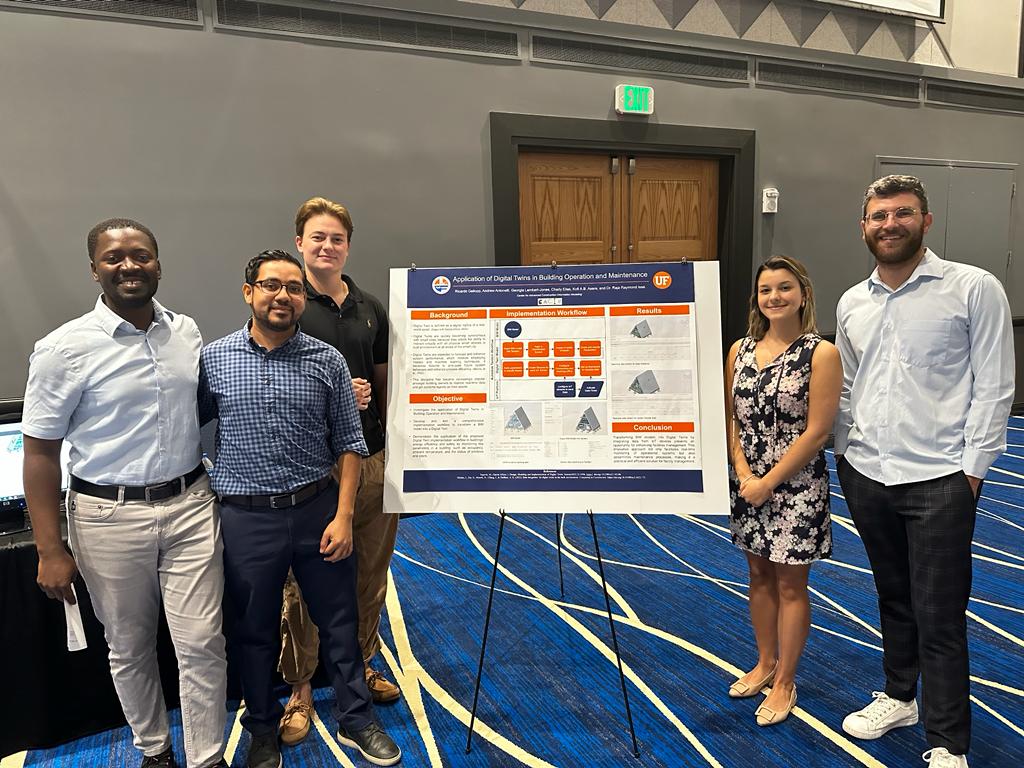
The University of Florida’s Center for Advanced Construction Information Modeling (CACIM) recently presented its research on digital twins applied in Building Operation and Maintenance at the 2023 Annual Fall Undergraduate Research Expo. The event was held on Tuesday, September 19th in the Reitz Union Grand Ballroom from 5-7 pm promoted by the Center for Undergraduate Research Board of Students (CURBS) and UF Student Government.
Digital Twins are virtual replicas of real-world assets, such as buildings, that integrate real-time data of their physical counterparts received from sensors and other systems. As digital twins gain popularity for monitoring smart buildings, CACIM is exploring how to transform BIM models into functional digital twins that can provide valuable insights for facility management and maintenance.
CACIM Outlined Research Objectives and Early Findings
The CACIM team explained their core research objectives:
- Investigating applications of digital twins for building operations and maintenance
- Developing a workflow to transform BIM into a live digital twin
- Demonstrating energy efficiency and safety use cases by monitoring factors like occupancy and temperature
They displayed a pilot project that implemented their proposed workflow to create a digital twin using a campus building BIM model and live sensor data. The prototype showcased real-time visualization and analytics for facilities management.
CACIM Sees Opportunity to Enhance Building Operations
Transforming BIM into digital twins presents exciting opportunities to improve building operations through data integration. Digital twins enable forward-looking insights for maintenance, performance, and efficiency.
By bridging modeling and IoT technologies, CACIM aims to make practical digital twin solutions accessible for smarter facility management. Their innovative research at the undergraduate expo offered a preview of the future of data-driven, proactive maintenance.
by: Ricardo Gallopp